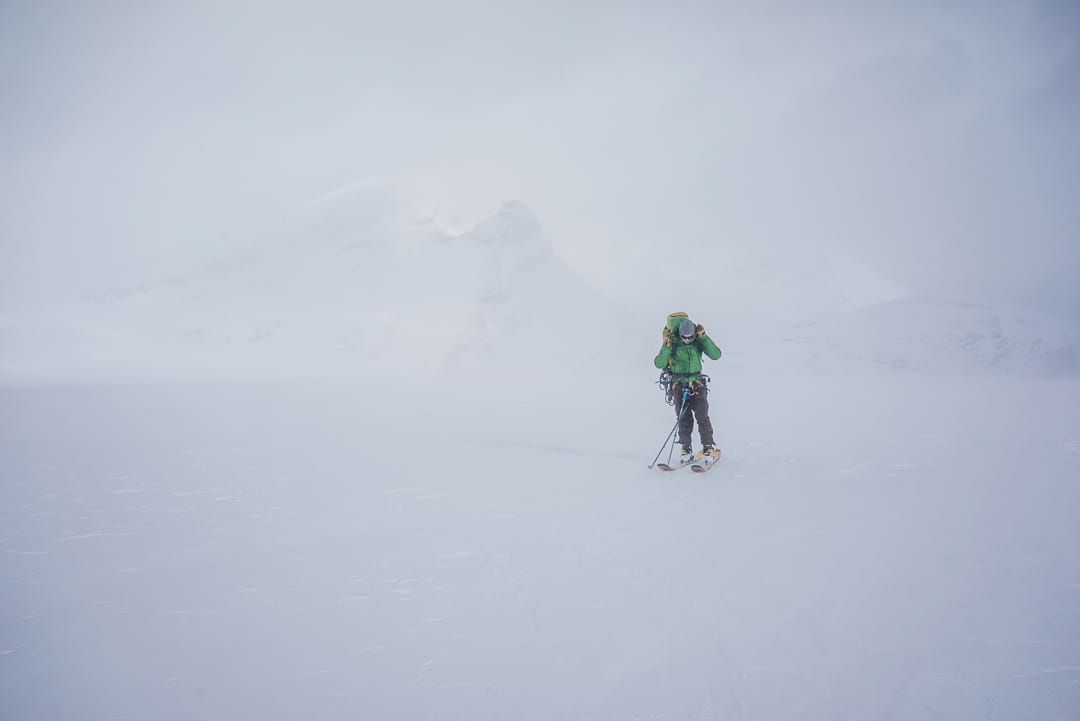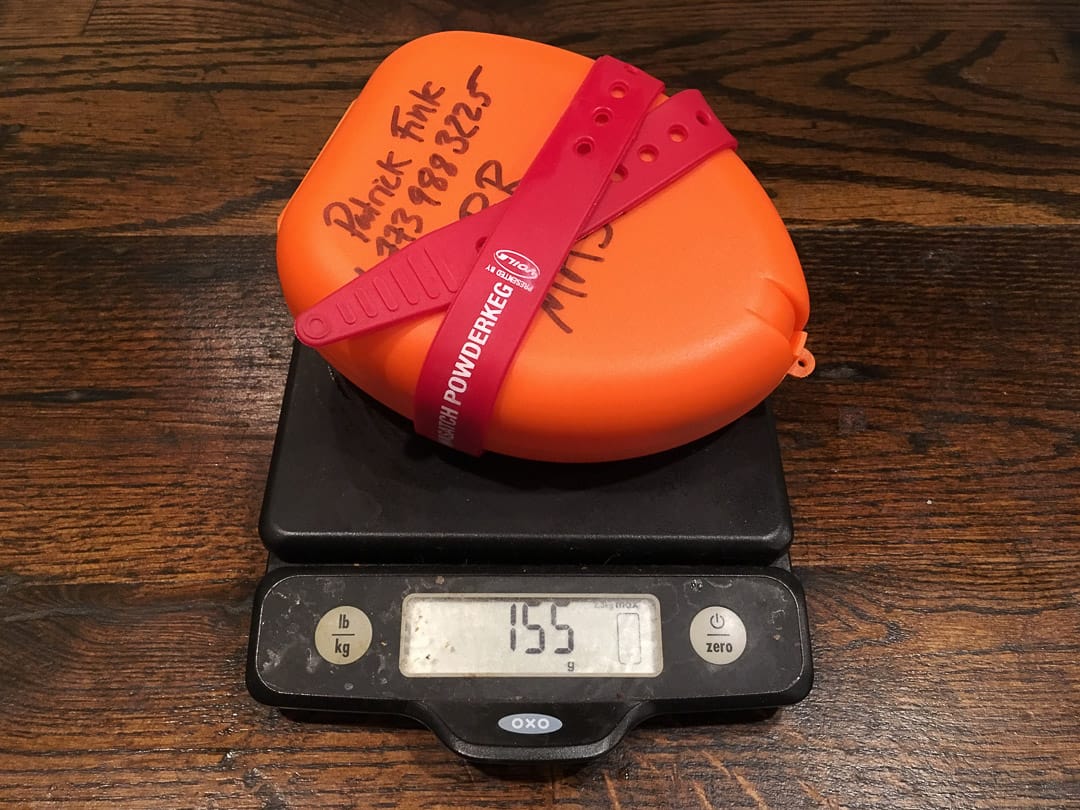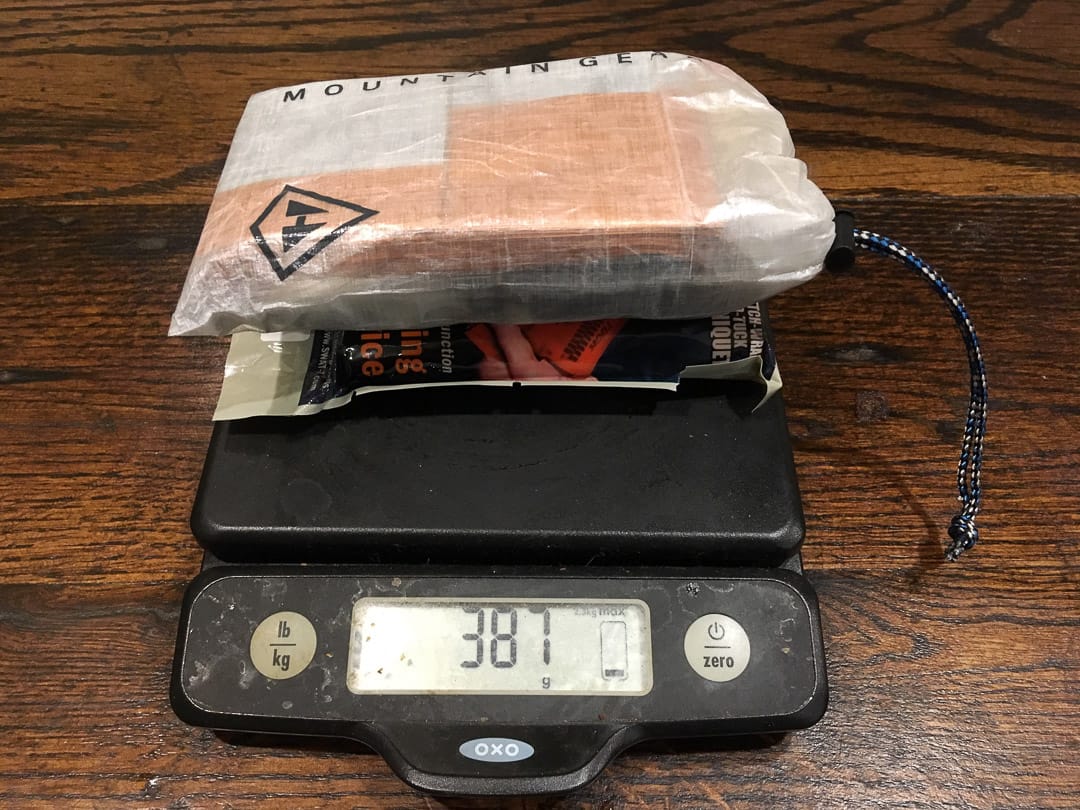
You know how this goes—plan for the unexpected. From good to poor vis in an instant. Photo: Alex Lee
When all or some of it hits the fan, having a repair / hits-the-fan kit can help keep peace of mind.
This story originally appeared on Mountain Lessons and is republished here with permission. You can hear Fink discuss airbags on Episode 11 of The High Route Podcast.
I’ve been thinking a lot lately about what emergency gear is worth carrying in the backcountry. It all began while I was on a hut trip and my binding screws decided to start backing out… it was only at that point that I found out they were mounted with Torx T-20 screws, and nobody carries that screwdriver.
I hate carrying things. I rarely carry more than 10 oz of water and a single bar for day-long tours because weight sucks. If I finish a tour with extra water or food, that seems stupid. It follows that I don’t really want to carry gear that I don’t need with me on backcountry tours. Still, I was inspired to finally some gear together by two other Wasatch tourers, Noah Howell and Brody Leven.
The way that I see it, the goal should be to have just enough gear to limp my way out of most situations without risking life or limb. That narrows my scope:
- Repair: I’m not going to carry bailing wire and a bunch of other junk. I just need to be able to make common adjustments to my bindings, and jerry-rig attaching a ski to a boot/force a boot into ski mode.
- Medical: I care a tiny bit about disabling blisters. I care much more about delivering life-saving medical interventions for ski-related injuries.
- Rescue: I appreciate being able to call for rescue. In the Wasatch mountains a cell phone will usually suffice. I often also carry an InReach in the bottom of my backpack, and that’s not pictured here.
- Bivy: Should all of the above fail, I should be able to spend a night out and survive. I assume that any time I’m touring, my kit includes a puffy jacket and a shovel, so this category is small.
So, I give you the…
Contents from top to bottom, left to right: Hyperlite mountain gear nano dynema stuff sack, Voile strap, CPR mask, tiny roll Leukotape, pill carrier, SWAT-T tourniquet, space blanket, WetFire tablet, SPF chapstick, lighter, Leatherman skeletool, Petzl E-Lite.
The total contents of this kit, including stuff sacks, is 549g (1.2 lbs). The rationale for each piece of gear is listed below.
- Hyperlite Mountain Gear Dynema Stuff Sack: ($20) Durable, highly water resistant, insanely light. Used to bundle and organize small items in the kit.
- Voile strap: ($6) Long, and with metal buckle. Can be used for all kinds of repairs, including strapping boots to skis and forcing boots into ski mode. Can also be used to make a snowshoe out of a pine bough, or whatever else you might fancy. I usually have more than one around, because I store my skis with them, but this guarantees that I’m carrying at least one.
- CPR mask: ($7) In my view, the one indispensible piece of backcountry first aid gear. Since asphyxia tends to kill avalanche victims who don’t die of trauma, CPR can be a life-saving measure for people that you pull out of the snow. Having the mask, which while the bulkiest item in the kit is actually one of the lightest, lets you deliver high-quality rescue breaths.
- Leukotape: ($8.20/roll) Forget the moleskine, this stuff is a blister lifesaver. This is 12″ wrapped around a toothpick.
- Pill container: Carries 1000 mg tylenol, 800 mg ibuprofen, and 3 narcotic pain tabs with no room to spare. Padded with a bit of cotton to prevent pills turning to dust. Intended to treat pain in case of unforseen injury.
- SWAT-T tourniquet: ($11.88) Uncontrollable bleeding due to either open fractures or stab to a compressible area is the other life-threatening condition that I want to be able to treat. This tourniquet is basically a really manly yoga band that can be stretched tight across your limb of interest. In contrast to other types of tourniquets, this also has other uses. Can be used as part of your repair kit, or to construct a splint if need be. It’s a huge rubber band.
- Space blanket: ($9.99 for 5) For bivy or medical care. Avy victims are often hypothermic and need to be bundled. Spend the night out and you need to be bundled too. Very cheap, very effective, very light vapor barrier.
- Wetfire: ($7.95 for many) An incredible fire starter tab. Will burn floating in water, is extinguishable for future use, 5 year shelf life. Most places that I tour have wood, but most don’t have dry dry kindling. This is my advantage, and it’s tiny.
- SPF chapstick: a small form of emergency sunscreen for when you’re stuck in the sun and getting fried on your face. A very packable shape.
- Lighter: For making fire. Bic is tried and true.
- Leatherman skeletool: ($59.95) Just what I need and nothing more; a knife, real pliers, and a bit driver. As it’s set up here it carries two torx, two pozidrive, and two flathead bits. Weighs just a fraction of an ounce more than a tool that only drives bits. Bought the extra bit set to get pozi and torx bits, comes with phillips and flathead.
- Petzl E-Lite: ($29.95) Backup headlamp with built in whistle that has a tremendous battery life and weighs nothing.





For 9 more grams you can get a Petzl Bindi. Those 9 grams get you 160 more lumens. Super simple to girth hitch to things as well if you need to create ambient or indirect light.